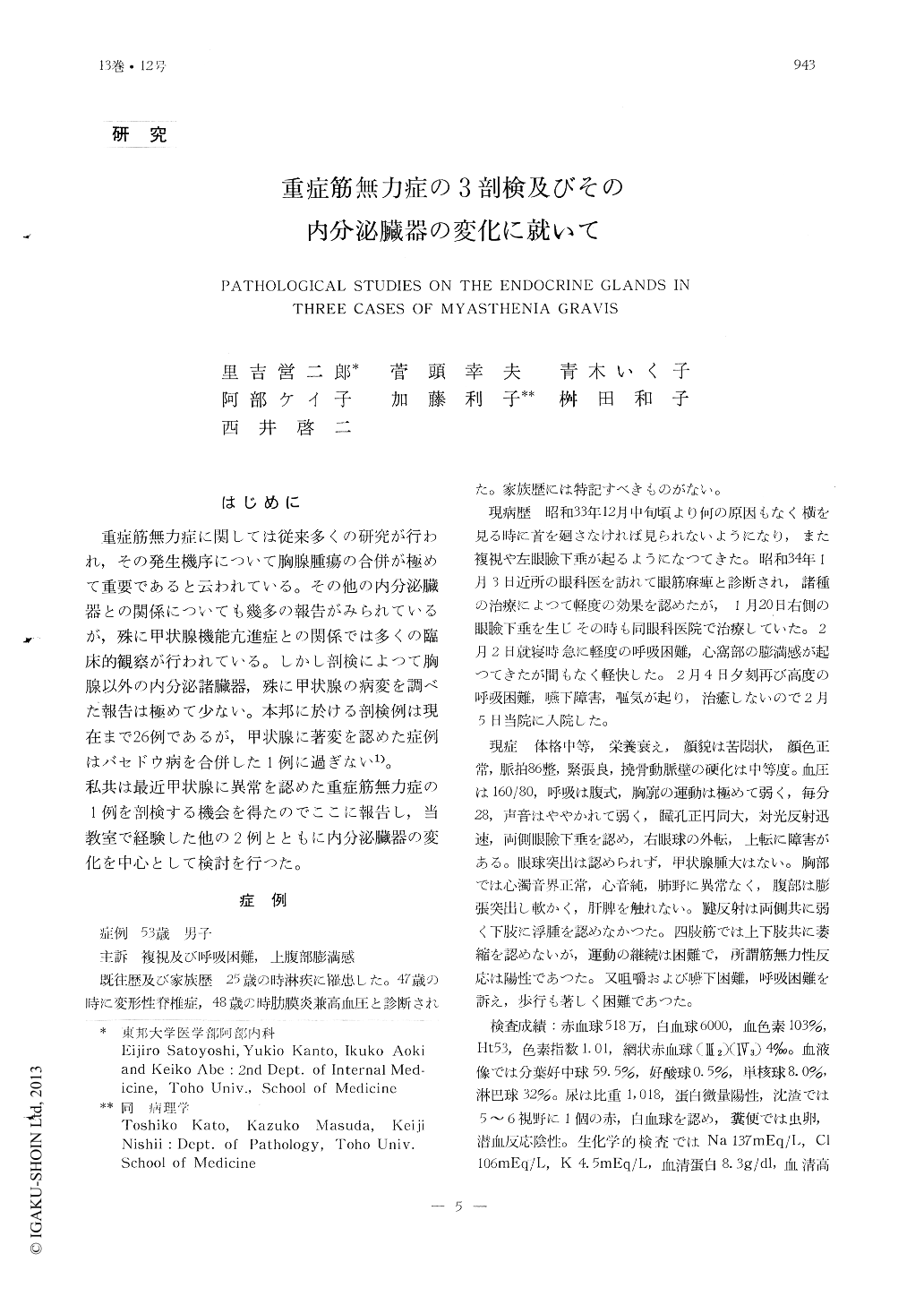Japanese
English
- 有料閲覧
- Abstract 文献概要
- 1ページ目 Look Inside
はじめに
重症筋無力症に関しては従来多くの研究が行われ,その発生機序について胸腺腫瘍の合併が極めて重要であると云われている。その他の内分泌臓器との関係についても幾多の報告がみられているが,殊に甲状腺機能亢進症との関係では多くの臨床的観察が行われている。しかし剖検によつて胸腺以外の内分泌諸臓器,殊に甲状腺の病変を調べた報告は極めて少ない。本邦に於ける剖検例は現在まで26例であるが,甲状腺に著変を認めた症例はバセドウ病を合併した1例に過ぎない1)。私共は最近甲状腺に異常を認めた重症筋無力症の1例を剖検する機会を得たのでここに報告し,当教室で経験した他の2例とともに内分泌臓器の変化を中心として検討を行つた。
A case of 53 year-old male with myas-thenia gravis was reported. The autopsy of this patient revealed the residue of the thy-mus, nodular goiter, grouped lymphocytic cells and atrophy of the skeletal muscles. There were also proliferated chief cells of the parathyroid, cortical atrophy of the adre-nal glands associated with degeneration and hypertrophy of the prostata.
The findings of the endocrine glands in three cases which included two previous cases were as follows : The abnormalities of the thymus that showed thymoma in two cases and residue of the thymus in one.
As for the thyroid, goiter in one and slightly abnormal follicles in the other two cases.
Sightly proliferated chief cells of the para. thyroids in two cases. Atrophy of the adre-nal glands in two cases and degeneration in one. Proliferated acidophil cells in the an-terior lobe of the pituitary gland in two cases. Small amount of brain-sand-deposit in the pineal body.
From the results as above, it may be con-cluded that there were no definite common abnormalities in the endocrine glands in three cases of myasthenia gravis.

Copyright © 1961, Igaku-Shoin Ltd. All rights reserved.


